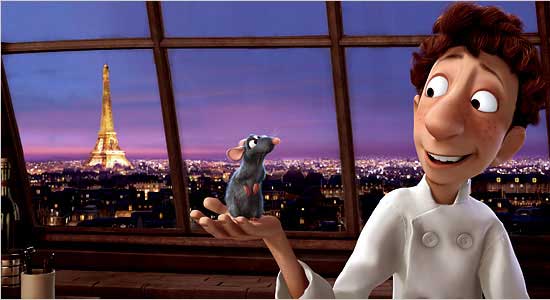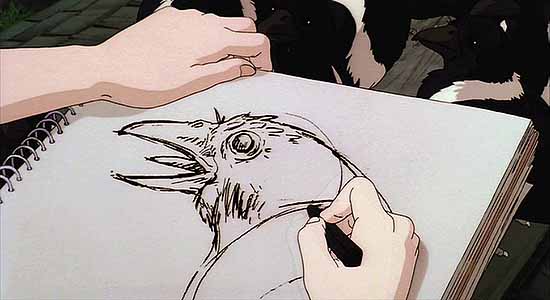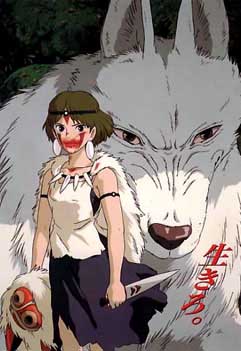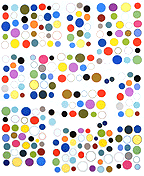View current page
...more recent posts
"Ratatouille is a nearly flawless piece of popular art," writes A. O. Scott of the New York Times, in a review accompanied by this picture:

Stephanie Zacharek in Salon calls it "one of the most beautiful animated pictures I've ever seen," in a review accompanied by this picture:

Any student or critic of art, popular or unpopular, knows why these statements are wrong and what's missing from these images and these movies (also Shrek, the Incredibles, Toy Story, and the rest): line. For reasons mostly of budget and a kind of unthinking rush to modernize, filmmakers have thrown out possibly the central tool in the history of visual expression, and replaced it with tricks of sfumato and chiaroscuro that give objects a rounded, "realistic" look but make everything in the frame bulbous and doughy. It would be like making music with no "attack transients" (sharp sounds at the beginning of notes that give them their texture and bite)--all music would become billowy and ersatz, like New Age music. Years after photography mooted realistic painting in the world of portraits and "scenes," these Tinseltown hacks persist in imitating photographic depth, using computer short cuts, and the results are often simply grotesque (see above--eyes without lashes that are merely encircled by reptilian lids).
It's not a fluke that Toy Story "pioneer" Jon Lasseter worships Japanese animator Hayao Miyazaki and has given his films a boost in the US. It's guilt from a fast food franchise owner at all the excellent cuisine he's displaced. Miyazaki is a poet of line.


So expressive! Whereas Pixar and its offspring have the smooth, slightly frozen look of '70s album cover illustration done with an airbrush:

A topic for another day: the Pixar movies are also the embodiment of Disney Values. The plucky little guy triumphs over adversity and learns a valuable lesson. Whereas in real life plucky little guys have boots in their faces all over town, while the big entities (such as entertainment conglomerates) grow more and more dominant.
